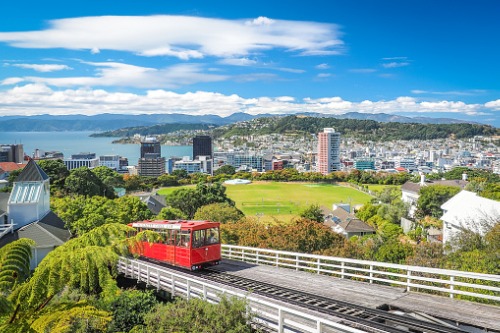

Last week, New Zealand’s Defence Minister asked the Defence Force to conduct a full national assessment of New Zealand’s fire risk, following the ongoing disaster with Australia’s bushfires which have been burning since September.
The fires in Australia have so far destroyed over 2,000 homes, burned through millions of acres of land and taken the lives of more than 20 people. They are the most intense and destructive fires that the country has seen for many years, caused by a combination of record-breaking high temperatures, drought and lightning strikes, along with several alleged arsons.
New Zealand Defence Minister Ron Mark says New Zealand should be “looking closely” at what’s happening in Australia and do some serious “forward planning,” as there is a concerning trend of fires breaking out, especially on the East Coast. Fire and Emergency New Zealand (FENZ) says it has the resources to deal with a major wildfire, with fire crews having recently fought a major forest fire in Napier – a fire which grew to over 300 hectares before it was contained.
“While supporting Australia, we also retain enough resources locally to ensure we have the capacity to fight bushfires in New Zealand,” a FENZ spokesperson noted. “There are 11,800 volunteer firefighters in New Zealand, and 1,810 career firefighters.”
According to FENZ, New Zealand’s fire risk is currently rated as ‘low’ or ‘moderate’ in most areas, though a couple of spots in North and Mid-South Canterbury are classed as ‘high’, meaning any work involving heat generation or sparks must be done with fire extinguishers on hand.
New Zealand saw its worst wildfire in over 72 years in Pigeon Valley, a blaze which burnt across 35km of land and forced the evacuation of a town of 2,500 people in February 2019. Prior to that, 2017’s Port Hills fire caused $18.3 million in damage.
University of Auckland professor of environmental science George Perry says that although New Zealand’s fire risk is lower than that of Australia, rising temperatures and increasing summer fires could make the country more vulnerable to large-scale blazes – and, as it stands, Kiwis are not very well prepared.
“There’s a high risk that what we end up with is a more flammable landscape that is more vulnerable to fire,” Perry said.
“I would say most people in New Zealand are not prepared at all. People are very prepared for earthquakes and tsunamis and volcanic activity, but I don’t think most people would have thought about fire as a threat. People have always seen it as something that happens in Australia or California or parts of the Mediterranean basin, and not something we need to worry about so much.
“If you look at the average over the last 30 years, these recent fires are very large,” he stated. “They are very significant, especially because the vegetation here has not really adapted to fire at all.”
When it comes to protecting against fire risk, the Insurance Council of New Zealand (ICNZ) says it is vital for homeowners and workers whose tools could lead to a fire hazard to understand the dangers, and to take appropriate measures to avoid any incidents.
“There have been two significant events [in the past] – the Tasman District fire in February 2019, which had an estimated cost to the insurance industry of $3.98 million, and the Port Hills fire in February 2017, which cost $18.3 million,” ICNZ insurance manager John Lucas said.
“It is critical that mitigation measures are taken to manage dry grass and dry ground level vegetation by both local authorities and property owners.
“Grass along roads should be regularly mowed, as fires can start simply from a spark from passing traffic. Also, grass around houses and under tree canopies in forestry areas should be mowed and kept low to reduce risks.”
“Those undertaking work involving machinery in dry rural areas also need to take preventative measures,” Lucas added.
“The first step is to always check the local fire risk and abide by fire danger measures in your area. If you do undertake work, you must have first response firefighting equipment at hand, as well as fire spotters positioned around the area to respond quickly if a fire flares up.
“Importantly, all work should be abandoned when there are windy conditions which can carry sparks far and wide.”
